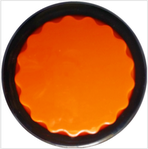May assist ADHD sufferers who suffer from sleep disorders.

Attention Deficit Hyperactivity Disorder (ADHD) has become a modern menace for millions of children and adults alike. It is characterised by problems with concentration, impulse control, organisation and memory and makes life difficult for the person affected by the condition as well as parents, teachers and other care-givers; but, most significantly it often leads to a lifetime dependency on drugs.
The Attention Deficit and Hyperactivity Support Group of Southern Africa (ADHASA) notes that between 8 & 10% of the South African population, which includes both children and adults, have either ADD or ADHD.
In an article published in January 2017 in the South African Journal of Psychiatry, Renata Schoeman and Manie de Klerk mention that non-organic sleep disorders (which are sleep disorders associated with mental and behavioural disorders) are a co-morbid condition to ADHD. Essentially this means that sleep difficulties are also often associated with ADD/ADHD affected children and adults.
According to by Dr Vatsal Thakkar, a clinical assistant professor of psychiatry at NYU Langone Medical Center, one needs to consider sleep problems as a possible cause when evaluating patients for ADHD.
He notes that many of the symptoms of ADHD are similar to insufficient or poor sleep, for example lack of focus, problems listening, forgetfulness and disorganisation, as well as a tendency to be agitated, excitable and disruptive. These behaviours interfere with a child’s social and intellectual development, causing problems with relationships with peers and adults, at school and at home.
There is also particularly strong evidence that children with sleep disordered breathing display many of the same symptoms & behavioural problems as children with ADHD. The problem, however, is that sleep disorder screening is not often done and so problems go undiagnosed.
Dr Thakkar makes the interesting observation that “the escalation of ADHD cases in the 1990’s and 2000’s coincided with the rise of the digital age, so much convenience and connection, also threaten the quality and quantity of sleep.
The night-time exposure to the light laptops,TVs and cellphones emit interferes with the body’s release of melatonin, disrupting sleep cycles and diminishing time spent in the deepest, most restorative phases of sleep.
SleepSpec is a non-invasive, non-medicated solution to sleep difficulties. These glasses contain scientifically engineered amber lenses, which filter out the blue light that suppresses the production of melatonin.

Worn for two hours before bedtime, SleepSpec allows the body to produce melatonin and prepare for sleep, while continuing with watching television or using other electronic devices. “The glasses, however, need to be taken off in complete darkness, as even the smallest amount of light can signal the brain to stop producing melatonin and to wake up,” says Daniel.
He adds that it is also important to keep bedrooms as dark as possible and use an amber coloured flash light on waking at night so as not to interrupt melatonin production. “Many children suffer from night terrors or are scared of the dark. If any light is needed, make sure that it is one with an orange or red colour as this contains little or no blue light and so will not disturb sleep,” he says.
The effectiveness of SleepSpec is also cumulative so the more they are used the more noticeable the difference.
This innovative, non-invasive approach to improving sleeping patterns could prevent many children and adults from being misdiagnosed as ADHD sufferers.







